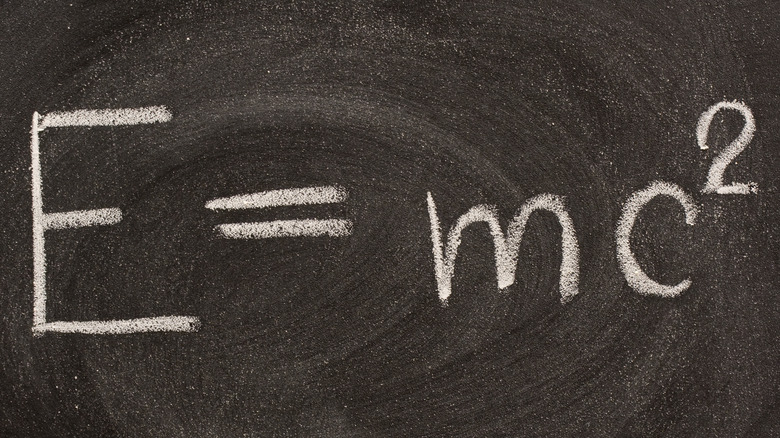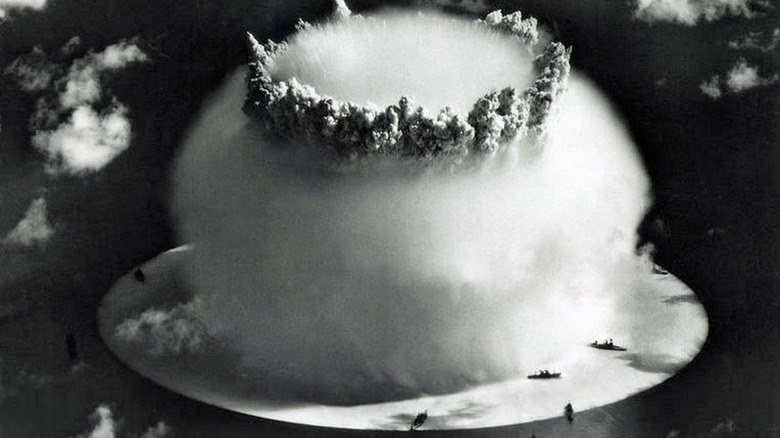How Is Einstein's Most Famous Equation Actually Used?
There are few equations that are nearly universally recognized. Most of us aren't scientists, engineers, or mathematicians, and so there's no place in our life for Maxwell's field equations or the quadratic formula. But, sometimes an equation is so elegant and profound that it finds a home in the popular imagination. One such snippet of math is Albert Einstein's famous equation: E = mc².
The equation is the capstone of what's come to be known as Einstein's Annus Mirabilis, or miracle year. In 1905, Einstein published four groundbreaking papers on physics and the nature of reality. The first was on the photoelectric effect and posited that light was composed of particles, which were later called photons, according to Sciencing. The second was on Brownian motion and lent credence to the theory that matter was composed of atoms. The third was on special relativity and established the constancy of the speed of light. The fourth paper is the one that laid out the famous equation (at least a form of it) which showed the interrelationship between mass and energy.
The Foundations of Einstein's Equation
Sir Isaac Newton once famously said "If I have seen further, it is by standing on the shoulders of giants." It is an acknowledgment that his groundbreaking insights are built on the work of thinkers that have come before him. The same is also true of Einstein and his equation. In fact, Newton suggested the idea early in the 18th century when he posited the question, "Are not gross bodies and light convertible into one another?"
Big names in physics were considering the relationship of energy and mass at the same time Einstein was. In the early 20th century Henri Poincaré extended the English scientist John Henry Poynting's explorations on the conservation of momentum and reportedly arrived at an equation similar to Einstein's. Shortly before Einstein's Annus Mirabilis, Austrian physicist Fritz Hasenöhrl showed that energy had mass. Although Einstein was the first to make the intellectual leap, all the pieces were in place just waiting for someone to make the connections (via Scientific American).
E=mc² is a window into a better understanding of physics
More than a tool for affecting change, Einstein's equation is a window that lets us better understand physical processes. For instance, Einstein is often credited with knocking over the first domino that eventually led to the atomic bomb, but nuclear energy and nuclear weapons came about due to the efforts of many scientists, just as capable as Einstein, according to World Nuclear Association. What E = mc² contributed, was an understanding of just how much potential energy was available in a fission reaction.
Likewise, Einstein's equation helps us to understand how our sun works and the mechanics of nuclear fusion in general. E = mc² allows scientists to approximate the age of the sun and how much life it has left, as Britannica explains.
The equation is also essential to understanding what goes on in high-speed particle physics, like what's studied at particle accelerators. Typically we think of converting mass to energy as in fission and fusion reactions. Particle accelerators turn that around and impart lots of energy to two particles, such that when they collide a new, heavier particle is briefly created by virtue of the massive amounts of energy imparted (via Fermilab).


